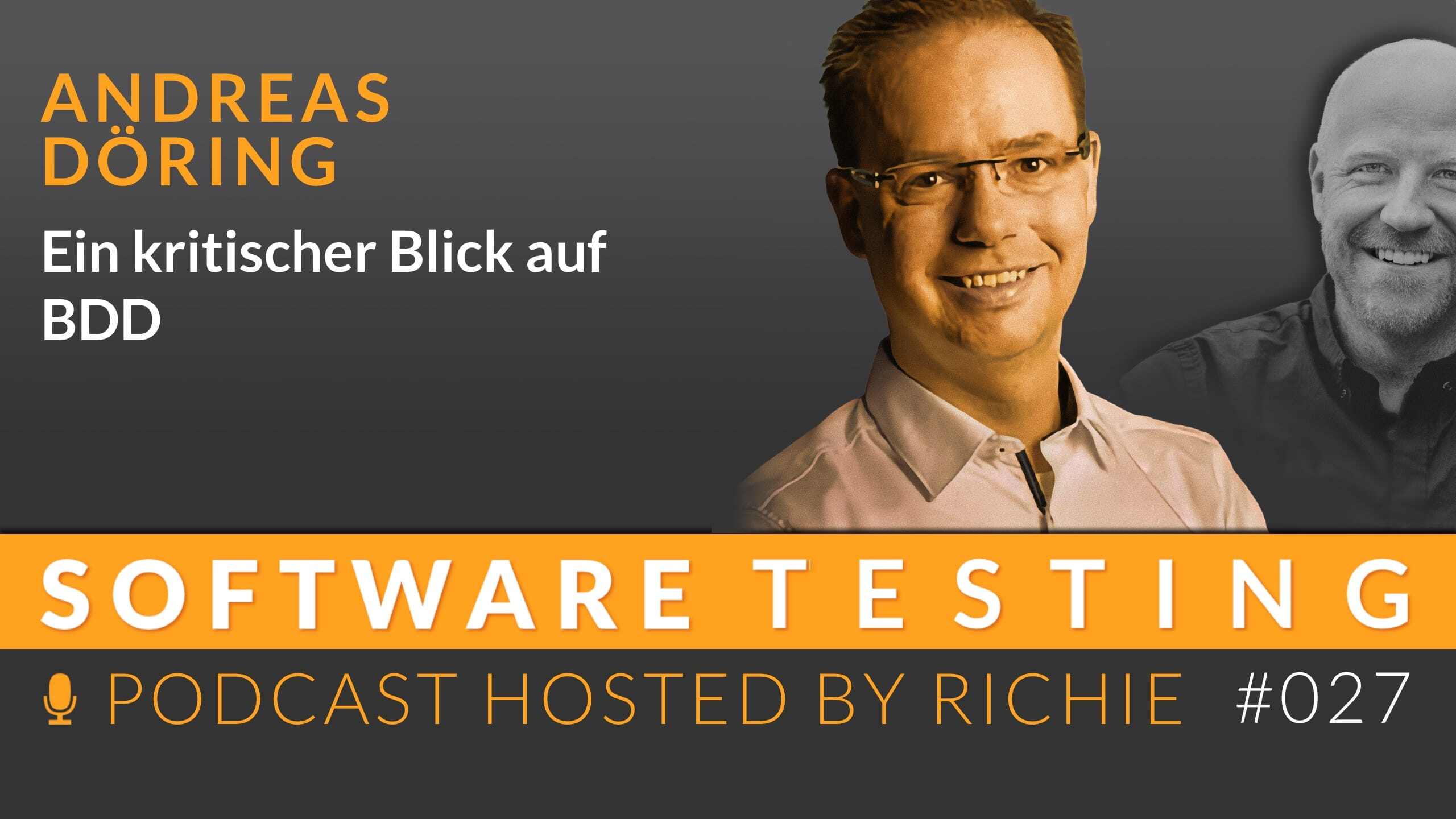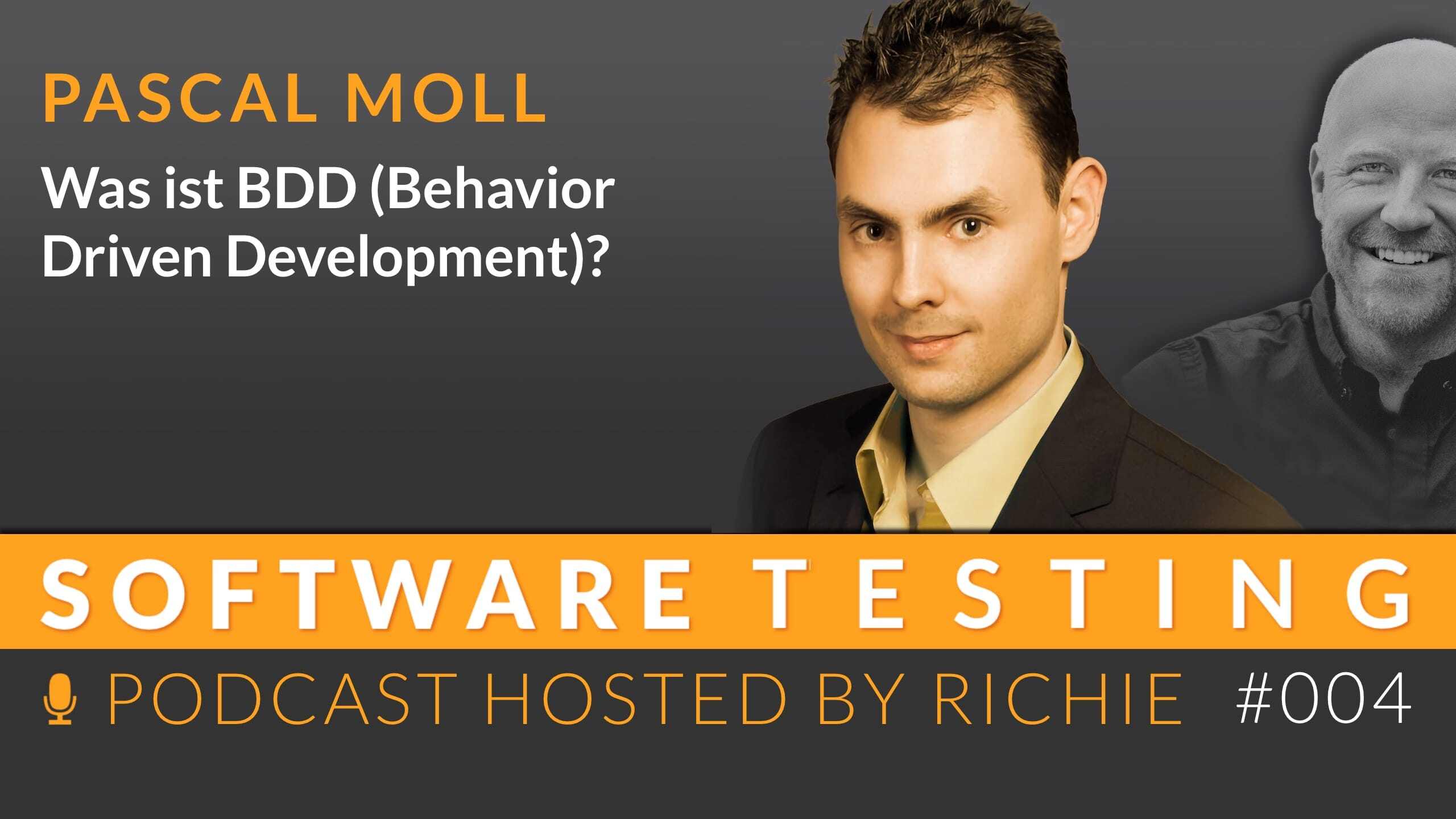What is BDD (Behavior Driven Development)
In this podcast episode, BDD expert Pascal Moll discusses the basics of Behavior-Driven Development (BDD), the advantages for software development...

Behavior Driven Development, or BDD for short, is a powerful framework that is often misunderstood or misapplied. It is based on clear communication and precision that can convince even the most skeptical managers. But BDD is more than just a method - it is a tool for creating precise requirements and turning them into code. Andreas shares his experiences with us and ends with valuable tips for application and integration into the team.
“What we also observe in the projects is that the management says ‘I’ve seen that once, it looks easy, so please do Gherkin/BDD now’” - Andreas Döring
Quality is no coincidence, but the result of functioning teams in which everyone can contribute their strengths. That’s why Andreas is committed to test automation and test management. He also supports his Associate IT Consultants in their professional and personal development. He has a degree in computer visualization engineering and has been working in the field of quality assurance since 2003.
Highlights of this episode:
In this episode, I talk to Andreas Döring about the pros and cons of Behavior-Driven Development (BDD) and how it is often misunderstood or misused. Andreas shares insights and tips on how BDD can be used more effectively to improve projects.
Behavior-Driven Development is a method that has existed since 2006 and aims to formulate requirements in such a way that they can also be used in testing. The core objective of BDD is to create a common vocabulary between requirements specialists, developers, testers and those who provide the test infrastructure. By creating test cases in a syntax that everyone can read - usually Gherkin - the whole team should work with the same language from the beginning to the end of the development cycle. This method encourages closer collaboration and a deeper understanding of project requirements.
Despite the clear advantages of BDD, there are often misunderstandings and misapplications in practice. A common problem is the attempt to introduce Gherkin syntax at the end of a project instead of developing it together with the requirements from the beginning. This leads to the actual benefit of BDD - improved communication and shared understanding - being lost. Many teams see BDD merely as a way to write their test cases in a ‘cool’ syntax without recognizing the deeper value of this practice.
A successful implementation of BDD requires more than just learning a new syntax. It is about bringing about a real cultural change in the team by integrating every phase of the development process - from requirements elicitation to test automation. This also means that the team agrees on a language and uses it throughout. This also includes accepting the additional work involved in maintaining the automation and infrastructure, as well as an awareness that not every software component needs to be tested with BDD.
Andreas recommends a pragmatic approach for BDD: Start small with a well-functioning team and formulate requirements in understandable syntax. This can be Given-When-Then or other formats such as Markdown when using Gauge. The key to success is to be willing to experiment and gain experience to find out what works in the specific project environment. This approach will help unlock the true value of BDD and ultimately make projects more effective.
While tools such as Cucumber or Gauge can be helpful, Andreas emphasizes the importance of using these tools consciously. Choosing the right tool depends heavily on the project and requires careful consideration of the additional effort required for maintenance and integration into existing processes. It is important to understand that tools alone do not guarantee success; it is how the team uses these tools and integrates them into their way of working.
Andreas urges caution when introducing BDD as a panacea for all project problems. A critical look at the use of BDD can help to avoid technical debt and ensure that this method offers real added value. The biggest challenge is to improve communication within the team and ensure that all members are pulling in the same direction. Only then can BDD reach its full potential.

In this podcast episode, BDD expert Pascal Moll discusses the basics of Behavior-Driven Development (BDD), the advantages for software development...

The Scaled Agile Framework (SAFe) helps companies to successfully master the agile transformation. However, effective strategies are also needed to...

Requirements play a crucial role in software testing as they form the basis for effective test procedures. The DeFOSPAM framework provides a...